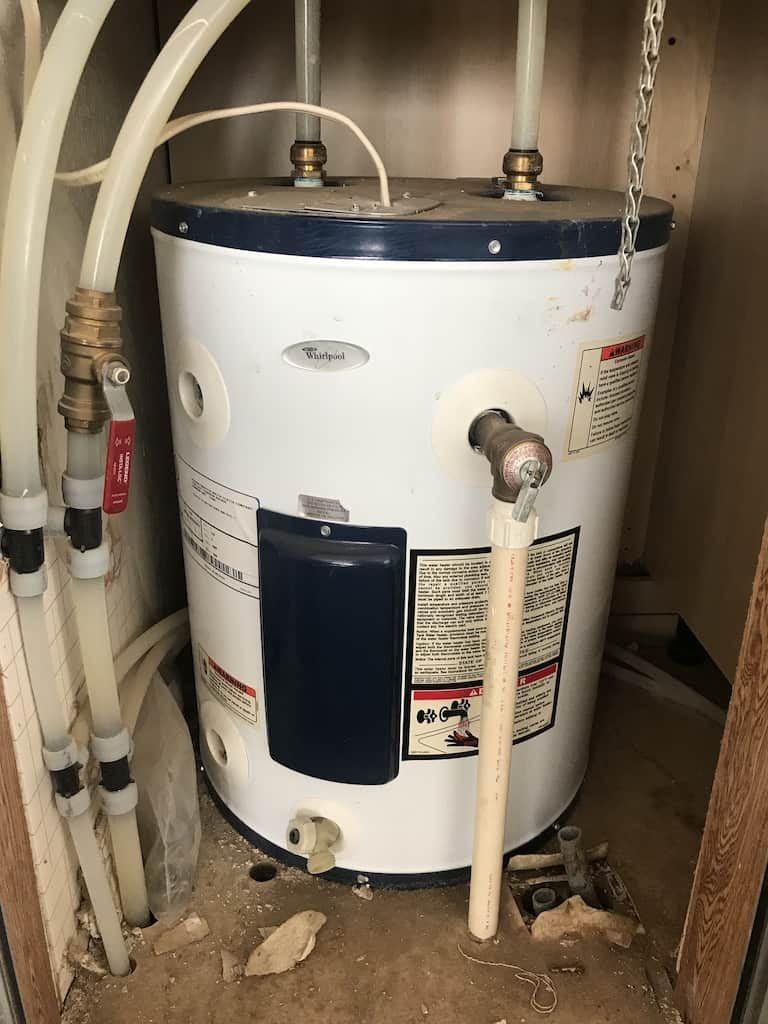
If you are considering protecting your park model or manufactured home investment you will want to change your water heater anode rod often. If you haven’t done it before, I assure you there are a few problems that I’ve encountered that I want to make sure you know what to do if you face them. Access, space to work to replace the rod, and the challenge of a stuck anode rod are most common and can really slow you down. Not now…
Replacing a water heater anode in a park model trailer home requires access, power and water turned off, a partial tank drain, locating the anode, securing the tank, unscrewing the anode, and reinstalling a modified anode. But warm weather climate anodes often require removal persuasion. But you can do it.
We like to keep our anode current. In good shape. We see a $20 anode rod as a very cheap insurance against much more expensive damage. For years we’ve replaced our home anodes at least every 2 years. From time to time there are challenges getting at the anode rod and getting it loose but nowhere near the challenges we’ve faced at our warm winter home. We’ve had every problem and got through them all. We hope you benefit from our experience.
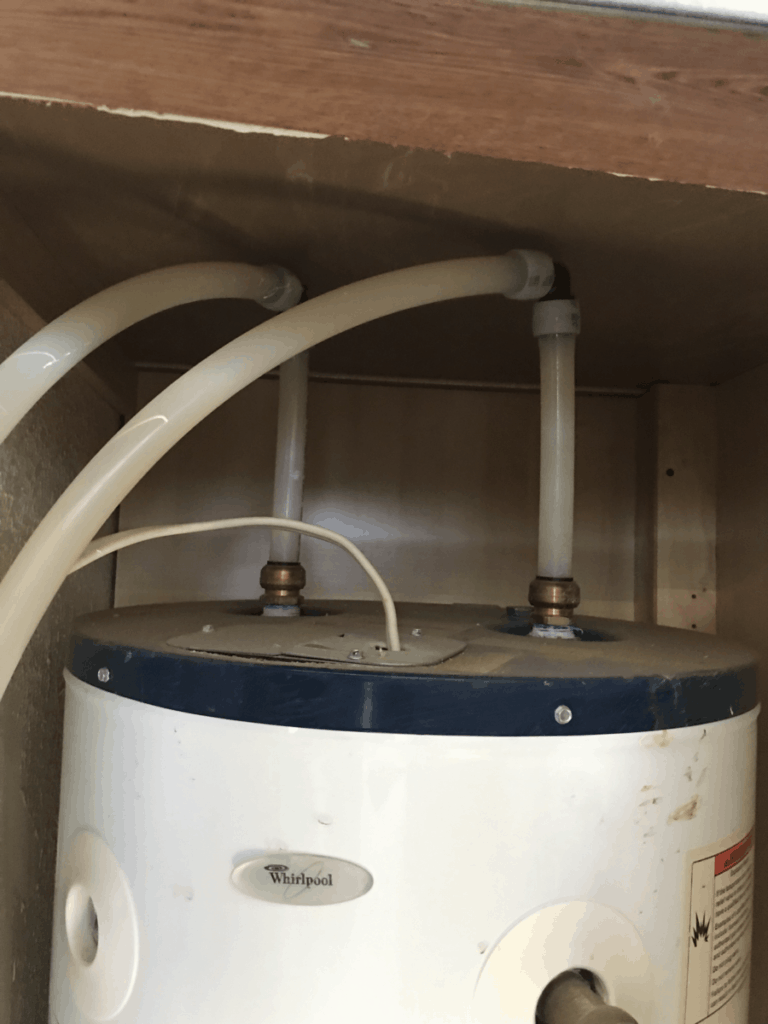
WHY YOUR ANODE ROD NEEDS TO BE REPLACED
Anyone, like us, who has experienced a leaking hot water tank knows the damage they can do. Two of our park neighbors have faced this problem too. We were lucky and only minor damage occurred. They were not nearly as lucky. Flooring, paint, and even wall repairs were necessary putting them out of their homes for a day or two and out of pocket.
Anodes rods are usually made out of aluminum and or magnesium. Each has a specific application. Your manufacturer or home store will generally know what you need for your model and water type.
Anode rods selectively corrode. In other words, instead of corroding the inner lining of your steel water heater tank itself corrodes. It depletes over time and once it is fully depleted corrosion will begin to focus on the tank. Keep your anode rod in good order and your tank can theoretically last many, many years.
CHANGE THE ANODE ROD and EXTEND THE LIFE OF YOUR WATER HEATER
Tools you will need
- a replacement anode rod (ideally a flexible one to fit tight spaces)
- 1/2″ drive socket wrench
- 1-1/16″ socket
- 24″-36″ cheater bar (aka snipe, pipe)
- teflon tape
- leather gloves
- a small container or short hose to catch/drain water
- hacksaw (*may be required)
- tie down strap (*may be required)
- piece of 2×4 lumber (*may be required)
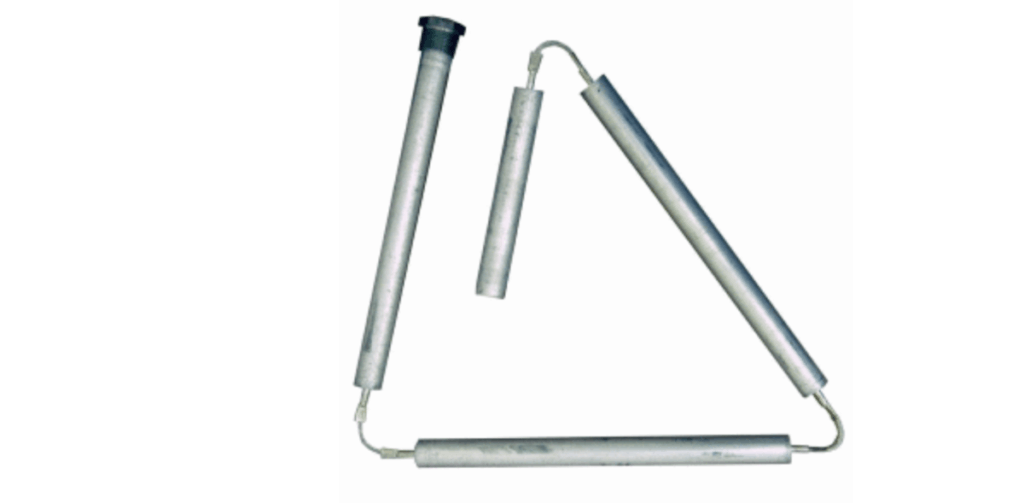
Step by Step
Each of the following steps make it possible to safely do this replacement.
REMOVE THE ANODE ROD
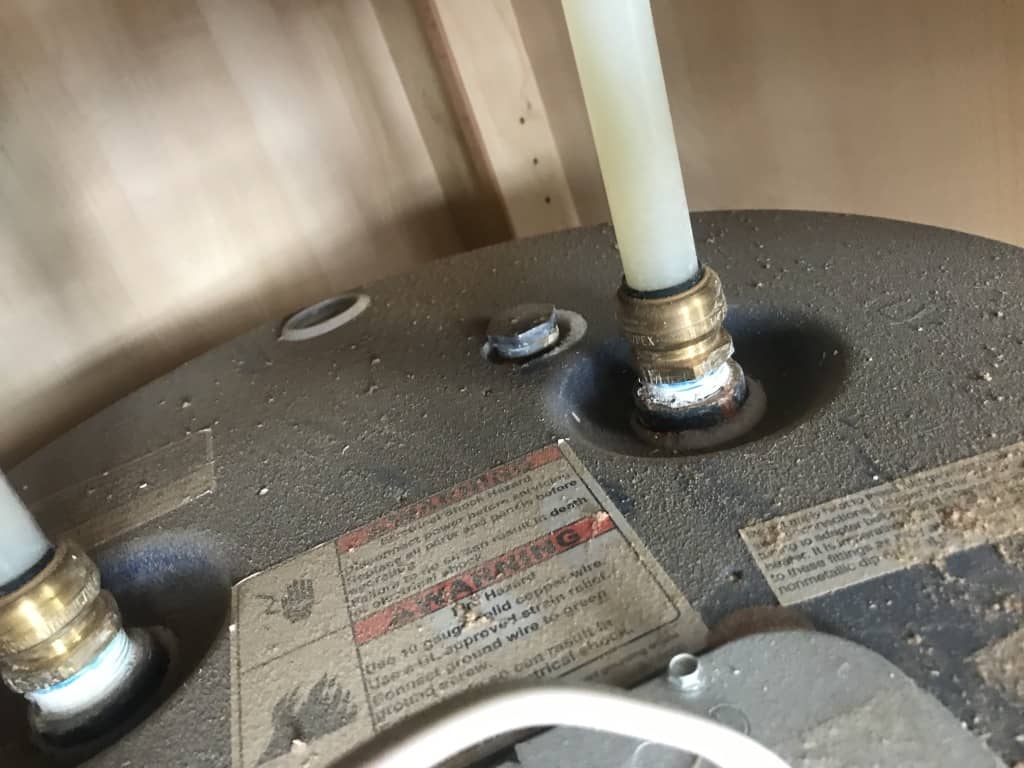
- Turn of the power supply to your electric water heater (if you have a gas water heater turn off gas and unplug the powered fan if any)
- Shut off the inlet (cold water) supply line to the water heater.
- Open a hot water facet inside to relieve hot water pressure in the tank
- Connect a hose on the drain valve of the hot water tank or place a container under the valve to catch water
- Gently open the drain valve on the water heater and remove 1.5-2 gallons of water. This water can be dumped down a drain.
- Find the anode rod on the top of the tank. It will have a 1-1/16″ bolt head but may be under a 1.5″ plastic cap or hole in the tank sheathing and under approx 3/4″ of insulation. Carefully remove a spot of insulation over the anode rod with a flat screwdriver if necessary.
- Put the socket, socket wrench, and cheater bar on the anode rod and turn counter clockwise. It may be very difficult to turn. Persist. (See “STUCK ROD” below if it is too tight and won’t loosen.)
- Turn the rod counter clockwise to remove. Use gloves as the anode rod may be very hot.
- If it looks partially dissolved that is good news. If it looks thin like a coat hanger wire it should have been replaced long ago.
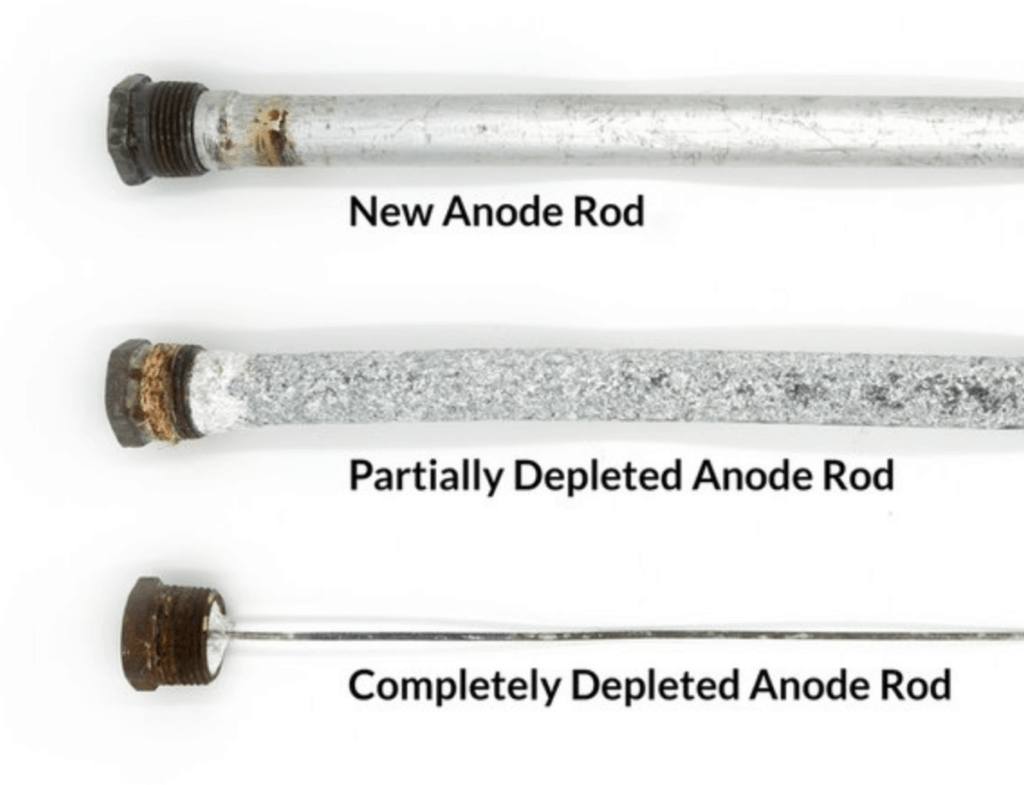
STUCK ROD? – watch this trick!…
INSTALL THE REPLACEMENT ANODE ROD
Installation should be a breeze. Have your telflon tape, and socket and wrench handy.
- cut new anode rod to length with hacksaw OR install a flexible one. (Note: park model trailers and manufactured homes often have very little space above the water heater and a flexible anode rod will make life much easier)
- turn 4-6 turns of teflon tape on the threads of the anode rod
- install and tighten
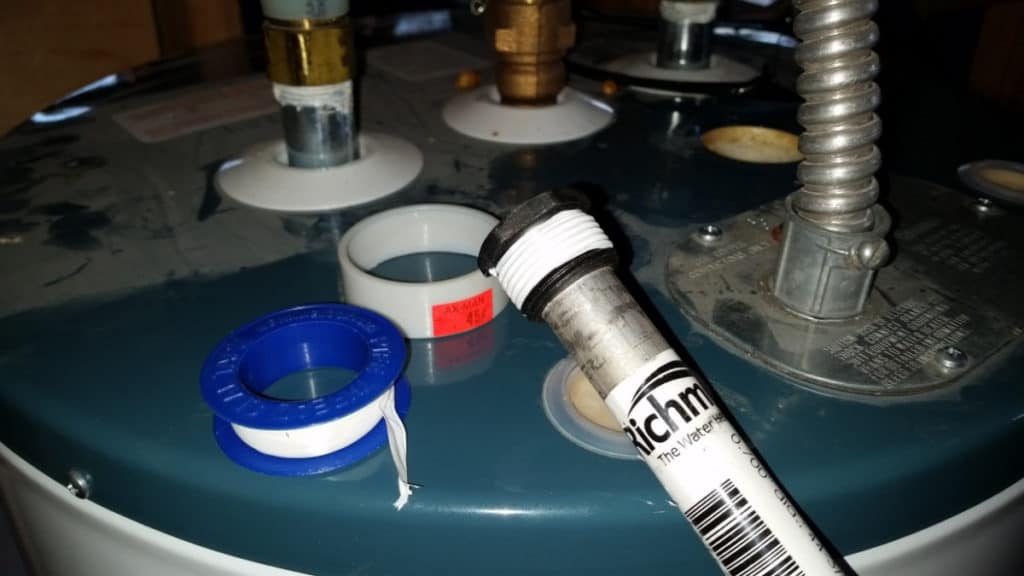
- turn on a hot water valve inside
- turn on the cold water inlet (supply to the hot water heater tank)
- wait 3-4 minutes turn off the hot water facet and check for leaks
- install the anode rod cap if it had one
- turn the power back on (turn on the gas if gas powered – you may need to reignite the pilot light – see your instructions)
- within 24hrs be sure to check again for any leaks
- give yourself a pat on the back… you just saved the cost of a plumber!
